- Home
- Encyclopedia
- Sky Pioneers: The Airmail Crosses Wyoming
Sky Pioneers: The Airmail Crosses Wyoming
In February 1931, advances in radio technology reached tiny Medicine Bow, Wyo., allowing pilots to fly coast to coast regardless of weather conditions. While few understood the significance at the time, aviation historians now equate the event with the driving of the golden spike that completed the transcontinental railroad 62 years earlier.
When the Medicine Bow low-frequency radio signal connected the radio beams from Rock Springs and Cheyenne, Wyoming, this completed the route from San Francisco to New York, and pilots now could fly across the country more safely and efficiently than ever before. The event was a game-changer for aviation and the transcontinental airmail system, which helped create the passenger airlines people rely on today.
The railroad had played an important role, too, in helping pilots find their way. From the air, early U.S. Mail pilots followed the tracks, referring to them as “the iron compass.” Often, the mail was carried on the airplanes part of the way and then transferred to trains for land transport. The installation of a series of beacons and large, concrete arrows visible from the air aided pilots day and night in so-called contact flying.
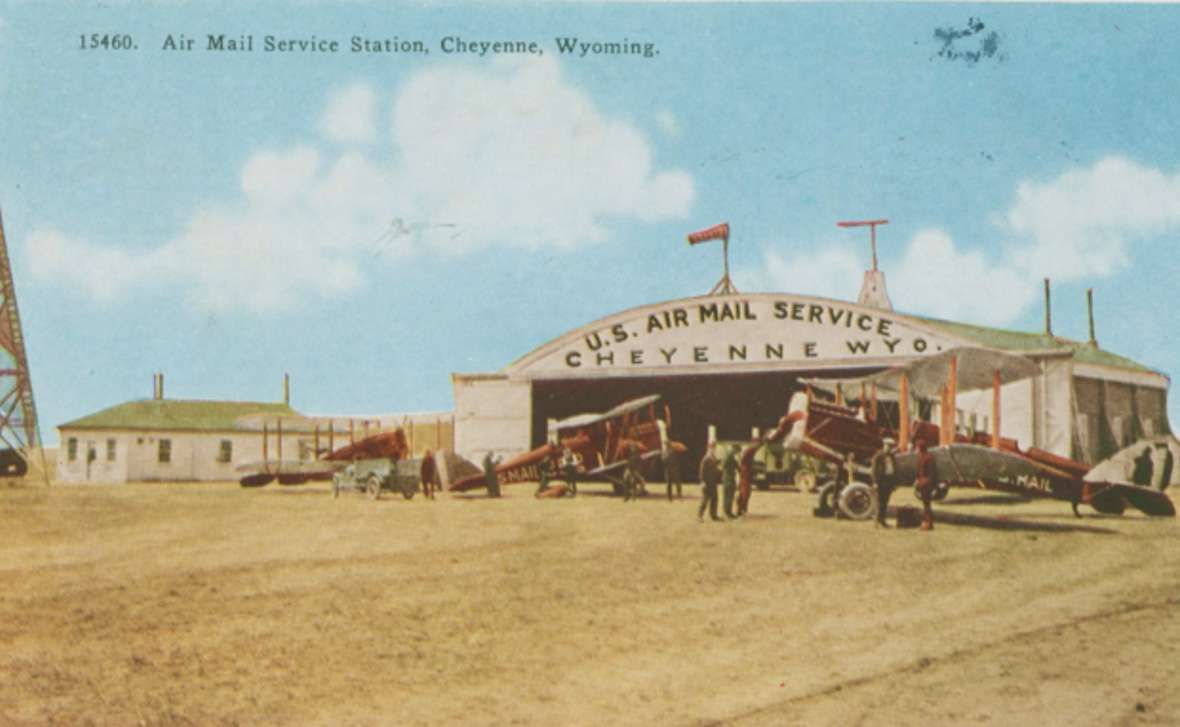
The post office tries out airmail
The transcontinental airmail actually began during World War I, thanks to an idea generated by U.S. Post Office executives. The war itself had brought about rapid advances in aircraft design and engine reliability, advances which did not go unnoticed by two visionaries within the administration of President Woodrow Wilson.
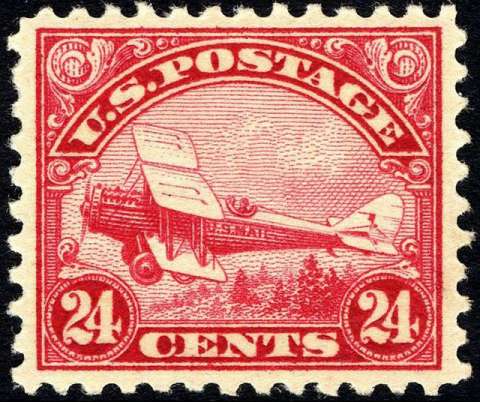
In fiscal year 1917-1918, Postmaster General Albert Sidney Burleson and Second Assistant Postmaster General Otto Praeger won a congressional appropriation of $100,000 and embarked on a bold experiment to sponsor the growth of commercial aviation with federal support. Trial flights began in May 1918 on a short, 218-mile route from Washington, D.C. to New York City, with a stop in Philadelphia. But flying even over that short distance with unreliable compasses, inadequate maps and no ground-based navigational aids, pilots often got lost.
For the next five years, they resorted to “contact” flying, maintaining visual contact with geographic features such as rivers, shorelines and the “iron compass”—the tracks. Flying at night or during stormy weather was hazardous, and all pilots risked their lives delivering the mail. And despite the hazards, the mail got through—the completion rate gradually improved to 95 percent or better.
By 1921 the U.S. Airmail Service had firmly established itself as a daytime-only operation between New York and San Francisco—sometimes referred to as the Columbia Route, or the T Route. Mail planes would land in the evening at selected points; mail would be transferred to a waiting train, which would haul it further down the line to be picked up in the morning by another plane. This leapfrogging drew the ire of congressional appropriation committees and the scorn of rail officials, as it yielded only a minute commercial advantage.
On February 22, 1921 with the threat of Congress’ cancelling further funding for the Air Mail Service, Colonel Paul Henderson, Second Assistant Postmaster General, staged a daring night flight from coast to coast. Only one pilot got through—Jack Knight, who braved treacherous winter weather in a heroic night flight between North Platte and Chicago—thus convincing congressional members of the value of the airmail system.
Beacons light the route
To make night flying safer, the post office in 1923 began building a series of lighted beacons between Cheyenne and Chicago, Ill., improving on marine technology developed by General Electric and the American Gas Accumulator Company. This particular section was chosen partly because of its relatively flat terrain and proximity to commercial power.
But more importantly, westbound planes leaving New York could reach Chicago by nightfall, while eastbound departures from San Francisco could land in Cheyenne before dark. Supplementing the beacon system were intermediate landing fields every 30 to 50 miles to provide a haven in the event of difficulties. Westbound flights could now traverse the continent in 34 hours, while eastbound services, with their prevailing tailwinds, took only 29 hours, besting the railroads by some two days.
The state of Wyoming was surveyed by ground and air in the summer of 1923. Construction of the airway started in the summer of 1924. Airways were designated by the first letters of their terminal cities and read from west to east and south to north. They were designed so that no segment exceeded 1,000 miles and were subdivided in to 100-mile sections. Wyoming fell within the Salt Lake to Omaha section of the route which was designated SL-O. In the interest of bookkeeping, the beacons were numbered based on mileage from a terminal point west to east with the unit digit dropped. Thus Medicine Bow along the SL-O airway, 325 miles from Salt Lake City, became Site 32.
Fourteen intermediate fields located, from east to west, at Pine Bluffs, Burns, Federal, Laramie, Rock River, Medicine Bow, Dana, Cherokee, Latham, Red Desert, Bitter Creek, Lyman, Le Roy and Knight spanned the state. Sites located far from any nearby municipalities were named for the closest railroad siding. Land was leased from private individuals, the state or commercial entities based on prevailing land values, with leases running anywhere from a year to ten years.
The Medicine Bow intermediate field was one of 90 established along the Columbia route from New York to San Francisco and was initially located one mile west of town. It was relocated about 1929 to its present position, about nine-tenths of a mile southeast of Medicine Bow, to take advantage of the proximity to local utilities.
While under the administration of the federal government, the field had several classifications.
Earliest records list the property as a type “C”field. This was an intermediate field with boundary lighting, a rotating 24-inch beacon atop a 51-foot skeletal tower with primary electrical power supplied by an onsite gasoline generator with an extra generator for standby power.
The beacons rotated at six revolutions per minute.
Drum-style beacons housed a 24-inch parabolic mirror with a 1,000-watt Mazda lamp projecting 1,000,000 candlepower. Inside the drum was an automatic lamp changer with a spare lamp. Should the lamp burn out, the replacement could be installed and in focus in a matter of seconds. Flashing every ten seconds for one-tenth of a second, the beam was elevated about one degree above the horizon and could be seen at a distance of 40 miles on a clear night.
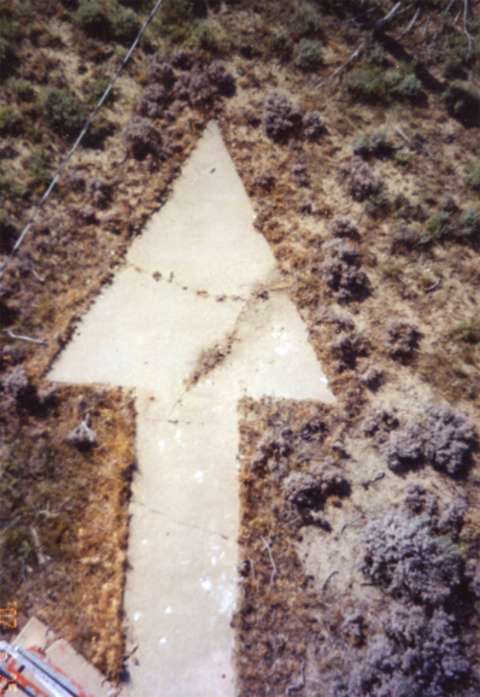
Below the beacon were two course lights, mounted on a 6-foot square maintenance platform, pointing forward and backward along the airway. Equipped with red or green lenses, the course lights indicated the presence of a beacon only (red) or a landing field within two miles of the beacon (green). Amber colored course lights denoted a landing field suitable for daytime operations only. The course lights flashed out a system of codes, which allowed the pilots to determine their mileage along the airway.
Concrete arrows point the way
Fifty-four-foot concrete day-marker arrows pointing to the next higher numbered beacon—that is, the next beacon to the east—were also installed as navigational aids. These were originally painted chrome yellow with an 8-inch black border. During the night, this arrow was lit from above by high intensity lights mounted on the beacon tower frame. At the “feather” end of the arrow was a 22 foot by 14 foot power shed housing a Kohler or Westinghouse generator if no local power was available. On the roof of the power shed was painted the airway route and the beacon site number.
Although the lighting of the federal airways was a profound success for night navigation, it fell far short of the requirements for all-weather work. The beacon system still required pilots to navigate by the contact method and was virtually useless when it was needed most—in times of low or nonexistent visibility. Commercial aviation had to compete with existing forms of transportation on reliability. It was toward this goal that researchers and engineers began to experiment with a technology that would revolutionize scheduled commercial flying: Radio!
Radio signals connect the coasts
As early as 1916, engineers at the National Bureau of Standards recognized the value of radio for marine and aircraft guidance. At the time, two technologies were available: The German designed Telefunken and the Bellini-Tosi radio compass. At the behest of the U.S. Post Office, research continued until 1919, which proved the practicality of the Bellini-Tosi system. By 1921 the Post Office had lost interest; however, the U.S. Army Signal Corps and the National Bureau of Standards at College Park, Maryland during the next four years continued to refine the Bellini-Tosi system along with incorporating several European patents.
After much experimentation the definitive version that emerged was the aural radio range that transmitted four courses and operated on frequencies between 200-450 kilocycles, which had an effective range of about 100 miles. The letters A (dash dot when transmitted in Morse code) and N (dot dash) were used as alternate signals; the signals overlapped and provided a steady monotone, or Morse-code T. This created a “beam” for pilots to use as their course.
If a pilot flying the “beam” drifted off course, an N or A would predominate in his earphones and warn him to make the necessary corrections. The signals were interrupted for station identification every 20 seconds and every 15 minutes for weather information. Wherever possible, the radio range courses were made to overlie the existing lighted airway.
By 1926, the four-course aural range had come into technical maturity and was only awaiting practical application along the federal airways.
On July 1, 1927, the Department of Commerce, Aeronautics Branch took over the U.S. Post Office’s existing infrastructure and began fulfilling its congressional mandate to upgrade the nation’s airways.
That fall, the airmail system ceased to be funded directly by the government and began to be operated by private contractors. The city of Cheyenne purchased a $600,000 facility and leased it to Boeing Air Transport, which had won the mail contract to San Francisco. According to Wyoming Aviation Historian Michael Kassel, interviewed for the Wyoming PBS documentary, “Without airmail, lots of companies we know as passenger airlines wouldn’t exist.”
In 1928, the Bellefonte, Pa., range became the first four-course aural range to be commissioned on the federal airways. Three years later, on Feb. 12, 1931, the Medicine Bow low-frequency radio range was switched on, thus connecting the two powerful beacon signals from Cheyenne and Rock Springs, Wyo., and completing the all-weather Columbia route, ushering in the world’s premier commercial airway.
The implications were profound. Now for the first time, an airliner could traverse the entire continent on schedule, without regard to the limitations of adverse visibilities. Airlines now had a commodity—service—that they could sell with confidence, and passengers could purchase a ticket with the reasonable expectation of arriving at their destination on time.
In the 1930s, Cheyenne’s Transcontinental Airport was among the busiest in the nation. Cheyenne eventually became the maintenance base for United Airlines, and the mechanics, according to Kassel, performed “literally magician’s work.” Many of them had learned their skills repairing aircraft flown during the early transcontinental airmail days.
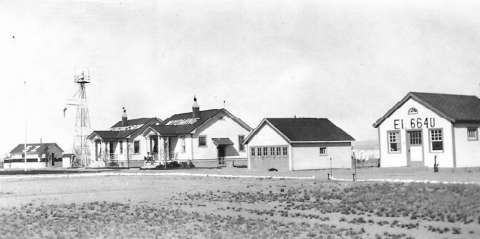
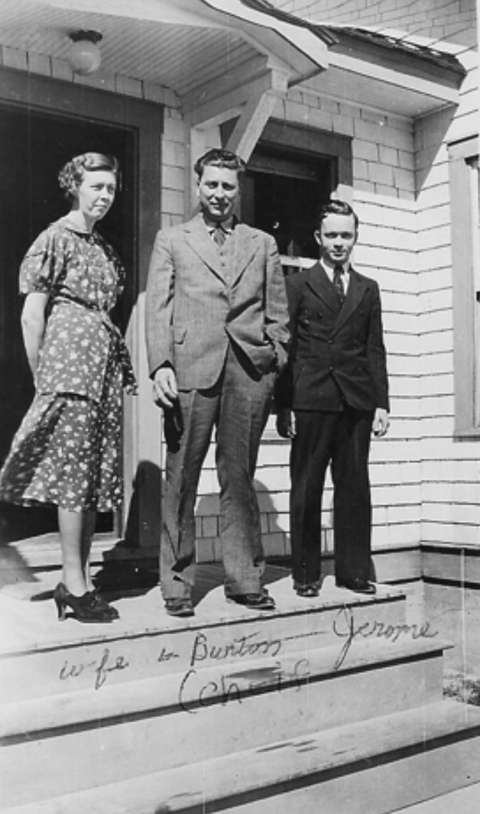
During World War II, Cheyenne also served as a B-17 modification plant. When the plant was operational, 4,000 aircraft were modified there, according to aviation historian Moser. After the war, the service was no longer needed, and airline hubs moved to Chicago, Denver and San Francisco.
Airway keepers help pilots
Across the country, in the 1920s and 1930s, intermediate fields were staffed on site by Department of Commerce personnel, referred to as airway keepers, who were fortunate enough to be provided prefabricated accommodations at a nominal fee. Assistant Airway Keeper Edwin Crucikshank, at Medicine Bow, received an annual salary of $1,200 and was charged $20 per month for his quarters.Pilots, in comparison, earned $4,000 per year for flying the mail across the country.
Bachelor quarters were fully furnished, while families had to provide their own furnishings. Medicine Bow had two assisitant airway keeper’s residences, each with its own seperate septic system, which were built along the northwest boundary fence approximatley 100 feet east of the teletype office. A third residence, the supervisor’s, was located approximately 1,200 feet east of the teletype office in the seven acres allocated for the radio range.
“K” quarters, as they were called—keepers’ quarters—were 22 by 28 feet. Roofs painted in red served as aeroglyphs with the name of the field, airway route, elevation and site number painted with yellow letters and numbers outlined in black. Families took advantage of the markings to identify their residences by referring to the roof markings.
“Each house had two bedrooms, a very small kitchen with built-in cupboards; the dinning room and living room were combined,” Betty Jean Cruickshank recalls. “The greatest thing about the new house was the indoor plumbing! It was a very small bathroom, but we had a toilet, a bathtub, a sink, a medicine cabinet and linen closet, which I was quite impressed with as we never had a linen closet in our other homes. We also had hot and cold running water. By today’s standards, it was a very small house, but to us it was a castle!”
Although many sites were isolated, personnel often led idyllic lives. Leave time was ample, and keepers and their families found time to enjoy areas that often abounded with fish, game and pristine forests.
Airway keepers shared their unusual experiences in a publication of the Department of Commerce Air Commerce Bulletin’s section called “Along the Airways.” Intermediate fields were open to all aircraft. Keepers were obligated to extend aid and hospitality to all aircraft and their occupants, as the following two incidents from the bulletin reveal:
“On August 3, 1933, Pilot Jack Huff in NC215M enroute from Tulsa, Oklahoma to Riverton, Wyoming with two expert nitroglycerin men and three hundred pounds of nitro for shooting a burning oil well at Riverton, landed at Medicine Bow for an overnight stay. On August 8th while on another trip of the same type, Huff said that due to the excellent condition of the Medicine Bow field, he decided to land for another night stay with three hundred more pounds of nitro for the same well at Riverton. On both visits the crew at Medicine Bow field was more than glad when the above part[ies] were safley in the air.”
In Feburary 1934, the U.S. Army began flying the mail after President Franklin D. Roosevelt issued an executive order canceling all existing commerical airmail contracts. The following illustrates the degree of ingenuity exhibited by airway personnel:
“One Army pilot landed at night and shut off his motor.[T]he next morning the weather was very cold, and with the aid of a large size blow torch, borrowed from the local garage, and a stove pipe, inserted through the motor cover, along with heating the oil, the motor started almost immediately. Several trips were made to town and to the post office with the mail, and transporting the pilot. For which no one was compensated for.”
By the early 1930s with the introduction of longer-range, all-metal monoplanes-such as the faster and more reliable Boeing Model 247 and the Douglas DC-2, along with budget cuts demanded by President Roosevelt’s economic measures, there was a substantial decrease in the intermediate field network. Intermediate fields were reduced from a high of 385 in 1931 to 250 in 1934. Medicine Bow survived the budget cuts until 1938 when the radio range, communications equipment and weather reporting capabilities were deactivated; however, the intermediate field still remained as a Department of Commerce operated facility until March 1, 1958. At that time, stewardship was assumed by the town of Medicine Bow.
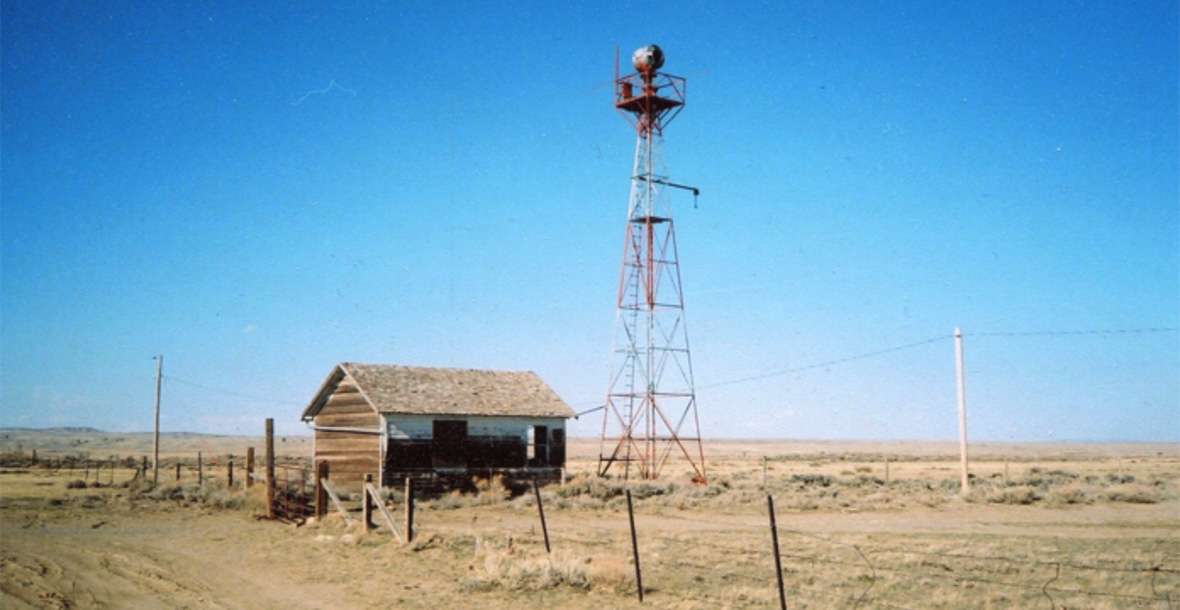
Resources
- Air Commerce Bulletin, 1, no. 8, 1929; 2, no.17, 1931; 4, no. 9, 1932; 5 no. 10, 1934. Washington, D.C.: Government Printing Office.
- Cheskaty, Larry. “ The Last Lighthouse.” FAA News. Oklahoma City, Okla.: Federal Aviation Administration, 1977,19-20.
- Cole-Keller, Betty. Edwin M. Cruickshank, Airways Keeper Site 32, Medicine Bow, Wyoming. Hudsonville, Mich.: Self-published, 2007.
- Heister, Dale.“Airways” End of the Seat-of-the Pants Flying.Los Angeles: Self-published, 1978.
- “How The Zeppelin Raiders Are Guided by Radio Signals.” Popular Science Monthly, April 18, 1918, 632-634.
- Jackson, William P., ed. The Federal Airways System.Washington, D.C.: Institute of Electrical and Electronic Engineers, Inc., 1970.
- Komons, Nick A. Bonfires to Beacons. Washington, D.C.: Smithsonian Institution Press, 1989.
- Manufacturers Aircraft Association, Collection 6858, Box 373, Folder 25.American Heritage Center, University of Wyoming, Laramie, Wyo.
- New York Times, May 18, 1918, A:1.
- “Night Air Mail Started July 1st.” Rock River Review.July 3, 1924, 1.
- Oral Interview with author. Robert Cruickshank. Son of Medicine Bow Airway Keeper Edwin Cruickshank. Basin, Wyo. March 2006.
- Roberts, Henry. Aviation Radio. New York: William Morrow and Company, 1945.
- Rosenberg, Barry and Catherine Macaulay.Mavericks of The Sky. New York: Harper Collins, 2006.
- Smithsonian National Postal Museum. “Airmail Creates an Industry: Knight’s Night.” Accessed May 25, 2016, at http://postalmuseum.si.edu/airmail/airmail/coast/airmail_coast_knight.html.
- U.S. Department of Commerce.Airway Bulletin, No. 786. Oct. 15, 1929. Washington, D.C.: Government Printing Office (hereafter GPO).
- _____. Bureau of Commerce Radio Facilities. March 5, 1935. Washington, D.C.: GPO.
- _____. Daily Radio Report. Form 68. June 30, 1930, Washington, D.C.: GPO.
- _____. Domestic Air News, No. 49, March 30, 1929; No. 7, June 30, 1927. Washington, D.C: GPO.
- _____. Time Sheets, Form 46. August-December, 1930. Washington, D.C.: GPO.
- Warner, Edward P.The Early History of Air Transportation.A Lecture Delivered by Edward Pearson Warner; under the James Jackson Cabot Professorship of Air Traffic Regulation and Air Transportation at Norwich University, November 21, 1937.Northfield, Vt.: Norwich University, c1938.
- Wolff, Steve. “Sentinels of The Airways.” Airways, (May 2008):58-61.
- Wyoming PBS. “Cowboys of the Sky.” Producer, Steve McKnight.KCWC-TV, 2013. Accessed May 20, 2016, at http://video.wyomingpbs.org/video/2365117704/
- Wyoming Tales and Trails. “Cheyenne Photos.” Accessed May 25, 2016, at http://www.wyomingtalesandtrails.com/cheyairport.html.
Illustrations
- The 1920s postcard of the Air Mail Service hangar at Cheyenne is from the American Heritage Center at the University of Wyoming. Used with thanks. The 1936 photo of the field at Dana, Wyo., is from the Kitching Collection of the Hanna Basin Museum. Used with permission and thanks.
- The rest of the photos are from the author’s collection. Used with permission and thanks.
